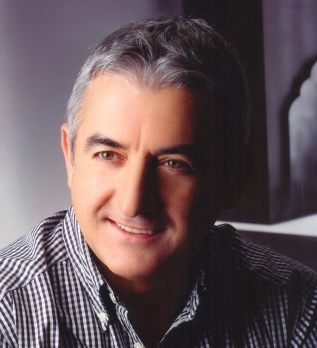From ENGINEERING ELECTROMAGNETICS to ELECTROMAGNETIC ENGINEERING
The role of Electromagnetic (EM) fields in our lives has been increasing. Communication, remote sensing, integrated command/ control/surveillance systems, intelligent transportation systems, medicine, environment, education, marketing, defense are only a few areas where EM fields have critical importance. We have witnessed the transformation from Engineering Electromagnetics to Electromagnetic Engineering for the last few decades after being surrounded by EM waves everywhere. Among many others, EM engineering deals with broad range of problems from antenna design to EM scattering, indoor–outdoor radiowave propagation to wireless communication, radar systems to integrated surveillance, subsurface imaging to novel materials, EM compatibility to nano-systems, electroacoustic devices to electro-optical systems, etc. The range of the devices we use in our daily life has extended from DC up to Terahertz frequencies. We have had both large-scale (kilometers-wide) and small-scale (nanometers) EM systems. Large portion of these systems are broadband and digital, and have to operate in close proximity that results in severe EM interference problems. Engineers have to take EM issues into account from the earliest possible design stages. This necessitates establishing an intelligent balance between strong mathematical background (theory), engineering experience (practice), and modeling and numerical computations (simulation).
This keynote lecture aims at a broad-brush look at certain teaching / training challenges that confront wave-oriented EM engineering in the 21st century, in a complex computer and technology-driven world with rapidly shifting societal and technical priorities.
The lecture also discusses modeling and simulation strategies pertaining to complex EM problems and supplies several user-friendly virtual tools, most of which have been presented in the IEEE AP Magazine and which are very effective in teaching and training in lectures such as EM Wave Theory, Antennas and Radiowave Propagation, EM Scattering and Diffraction, Guided Wave Theory, Microstrip Circuit Design, Radar Cross Section Prediction, Transmission Lines, Metamaterials, etc.
Date and Time
Location
Hosts
Registration
-
 Add Event to Calendar
Add Event to Calendar
- 2500 Chemin de Polytechnique
- Montreal, Quebec
- Canada H3T1J4
- Building: Pavillons Lassonde
- Room Number: L-2710
- Contact Event Hosts
- Co-sponsored by Staracom
- Starts 06 October 2021 11:00 PM UTC
- Ends 27 October 2021 04:00 PM UTC
- 4 in-person spaces left!
- No Admission Charge
Speakers
 Prof. Levent Sevgi
Prof. Levent Sevgi
ELECTROMAGNETIC WAVE PROPAGATION MODELING AND SIMULATION
Biography:
Prof. Dr. Levent Sevgi is a Fellow of the IEEE. He received his B. Eng., M. Eng., and PhD degrees in Electronic Engineering from Istanbul Technical University (ITU) in 1982, 1984 and 1990, respectively. In 1987, while working on his PhD, he was awarded a fellowship that allowed him to work with Prof. L. B. Felsen at Weber Research Institute / New York Polytechnic University York for two years. His work at the Polytechnic concerned the propagation phenomena in non-homogeneous open and closed waveguides.
He was with Istanbul Technical University (1991–1998), TUBITAK-MRC, Information Technologies Research Institute (1999–2000), Weber Research Institute / NY Polytechnic University (1988–1990), Scientific Research Group of Raytheon Systems Canada (1998 – 1999), Center for Defense Studies, ITUV-SAM (1993 –1998 and 2000–2002) and with University of Massachusetts, Lowell (UML) MA/USA as a full-time faculty (2012 – 2013) and with DOGUS University (2001-2014). Since Sep 2014, he has been with Istanbul OKAN University.
He has been an IEEE AP-S Distinguished Lecturer for the term 2020-2022. He served one-term in the IEEE AP-S AdCom (2013-2015) and one-term and as a member of IEEE AP-S Field Award Committee (2018-2019). He has been the writer/editor of the “Testing ourselves” Column in the IEEE AP Magazine (since Feb 2007), a member of the IEEE AP-S Education Committee (since 2006), He has also served in several editorial boards (EB) of other prestigious journals / magazines, such as the IEEE AP Magazine (since 2007), Wiley’s International Journal of RFMiCAE (2002-2018), and the IEEE Access (2017-2019 and 2020 - 2022). He is the founding chair of the EMC TURKIYE International Conferences (www.emcturkiye.org).
He has been involved with complex electromagnetic problems and complex communication and radar systems for nearly three decades. His research study has focused on propagation in complex environments; electromagnetic scattering and diffraction; RCS prediction and reduction; EMC/EMI modelling, simulation, tests and measurements; multi-sensor integrated wide area surveillance systems; surface wave HF radars; analytical and numerical methods in electromagnetics; FDTD, TLM, FEM, SSPE, and MoM techniques and their applications; bio-electromagnetics. He is also interested in novel approaches in engineering education, teaching electromagnetics via virtual tools. He also teaches popular science lectures such as Science, Technology and Society.
He has given dozens of seminars, invited/keynote talks, organized/presented several tutorials, training sessions and short courses from half-day to three-days in universities/institutes all around the World. He has published more than a dozen special issues / sections in many journals as a guest editor and/or a co-guest editor.
His recent keynote talks are: (i) From Engineering Electromagnetics towards Electromagnetic Engineering: Teaching, Training Next Generations in MMS’2018 Mediterranean Microwave Symposium, Istanbul / Turkey, and in EuCAP 2019 European Conference on Antennas and Propagation, Krakow / Poland, (ii) Radiowave Propagation Modeling and Simulation in APCAP 2019 Asia-Pasific Conference on Antennas and Propagation, Incheon / S. Korea, and (iii) From Design to Market: EMC Engineering in InCAP 2018 Indian Conference on Antennas and Propagation, Hyderabad / India.
He has published many books/book chapters in English and Turkish, over 180 journal/magazine papers/tutorials and attended nearly 100 international conferences/symposiums. His three books Complex Electromagnetic Problems and Numerical Simulation Approaches, Electromagnetic Modeling and Simulation and Radiowave Propagation and Parabolic Equation Modeling were published by the IEEE Press - WILEY in 2003, 2014, and 2017, respectively. His fourth and fifth books, A Practical Guide to EMC Engineering (Sep 2017) and Diffraction Modeling and Simulation with MATLAB (Feb 2021) were published by ARTECH HOUSE.
His h-index is 35, with a record of more than 4100 citations (source: Google Scholar, July 2021).
Address:Ankara, Türkiye

